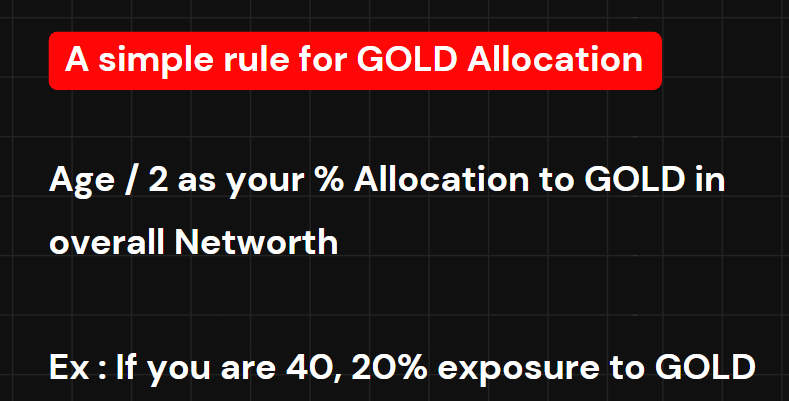
Market Overview
In today’s market overview for 23 August, we observed that the market refused to make significant moves in either direction, remaining very flat throughout the day. Despite an initial gap up in the morning, the market couldn’t sustain it, with most counters showing lethargy and little movement. Although the week began with a positive trend, gaining approximately 350 points over the last five sessions, the last two days have been dull, which is not necessarily negative. The Nifty index ended the week absolutely flat, reflecting the overall market sentiment.
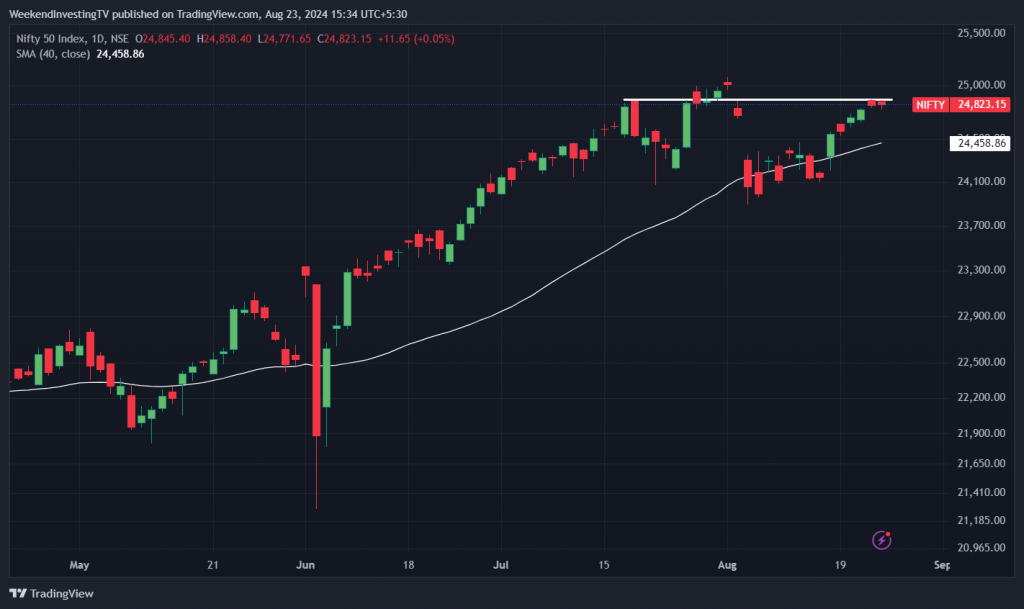
Nifty Next 50
On the other hand, Nifty Junior made a notable comeback after reaching previous highs. A small bearish engulfing pattern was observed, which could lead to a minor dip next week or be entirely ignored. If Nifty Junior crosses the 75,000 mark, there could be significant upward movement, though the formation of a second right shoulder might occur, hinting at an inverse head and shoulders pattern in the making. The index closed the day down by 3.3%.
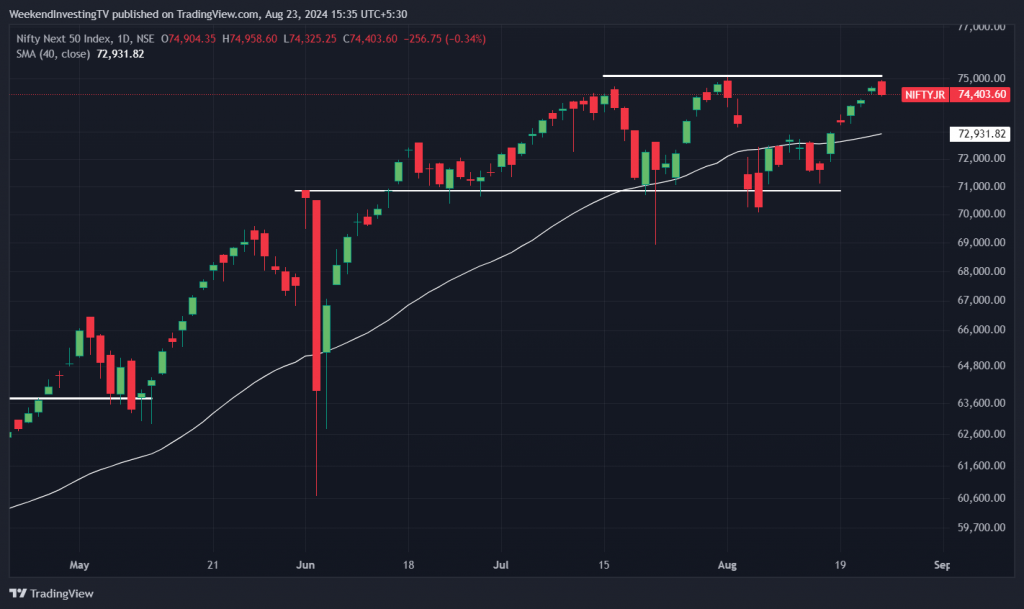
Nifty Mid and Small Cap
Mid-cap stocks also showed a bearish engulfing candle after six consecutive sessions of gains, signaling that the market is nearing a previous high, leading to some nervousness. The mid-cap index declined by half a percent, possibly due to end-of-week profit-taking or the anticipation of the FOMC meeting minutes release, which could influence global markets on Monday. This nervousness was also evident in the small-cap index, which remained dull, showing a marginal decline of 0.12%, right at the cusp of a major breakout.
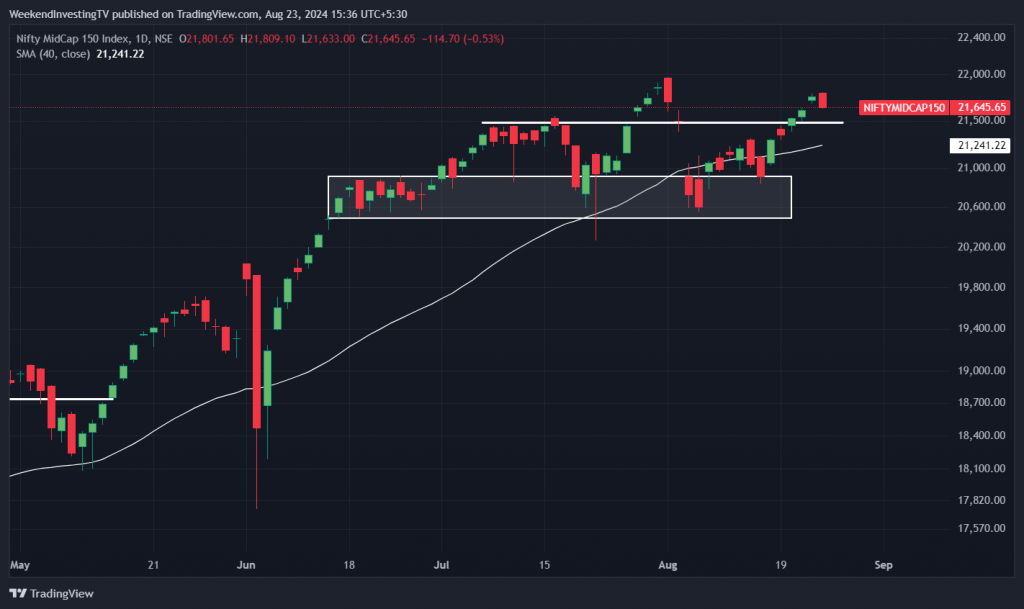
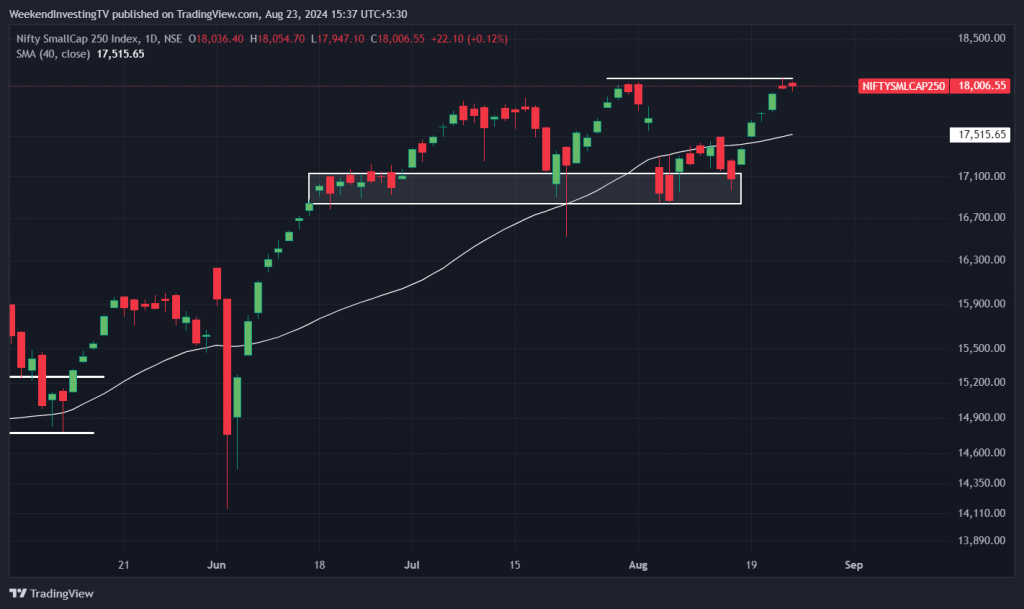
Nifty Bank Overview
The banking sector, much like the broader market, seemed to be holding its breath, waiting for developments in India’s interest rate trajectory and the global outlook on rates. There are expectations of a potential half-percent rate cut in mid-September, which, if it materializes, could be followed by another cut before the end of the year. This could set the stage for the Reserve Bank of India to also consider cutting rates.
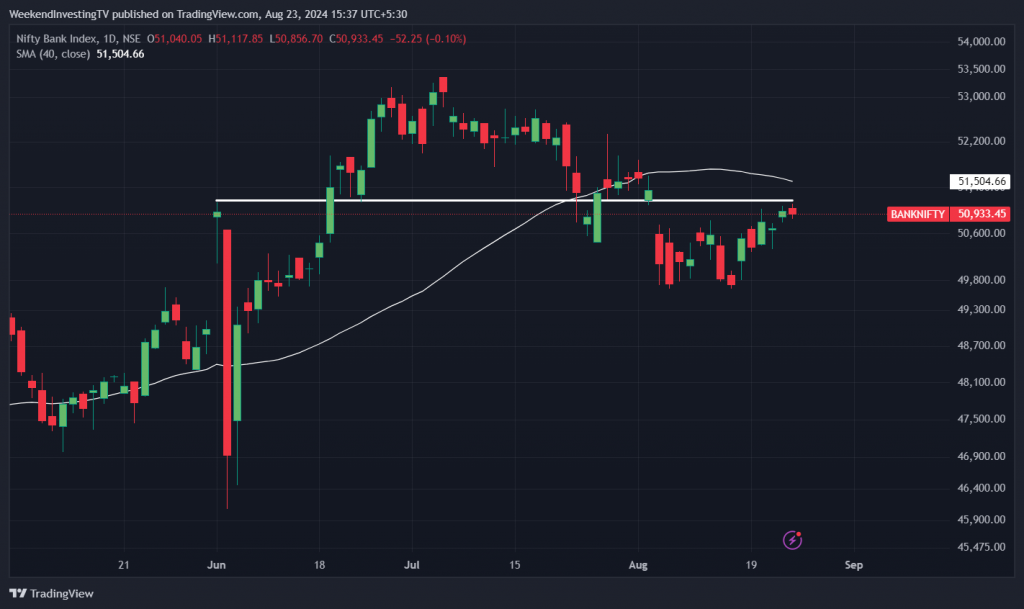
Momentum Trends
Momentum indicators on shorter-term averages, like the 20-day simple moving average, lost some ground today, although others continued to gain. The EMA 50 also dipped, with the last two sessions contributing to this movement. Despite this, a significant percentage of stocks (between 50% and 80%) are still trading above their recent averages. However, the advance-decline ratio today was telling, with 183 advances against 317 declines, a reversal from the trend seen in the last four days. After four strong sessions, one dull session isn’t concerning.


Nifty Heatmap
Among individual stocks, Bajaj Auto was the standout performer, rising nearly 5% in a single session. Tata Motors also saw a 1.5% gain, leading the auto sector. Other notable performers included Coal India, which gained 1.89%, and ICICI Bank, up 1%. However, IT stocks were soft, with most majors losing around 1%. In the FMCG and consumption sectors, stocks like Nestle, Britannia, Tata Consumers, and Titan saw some losses.
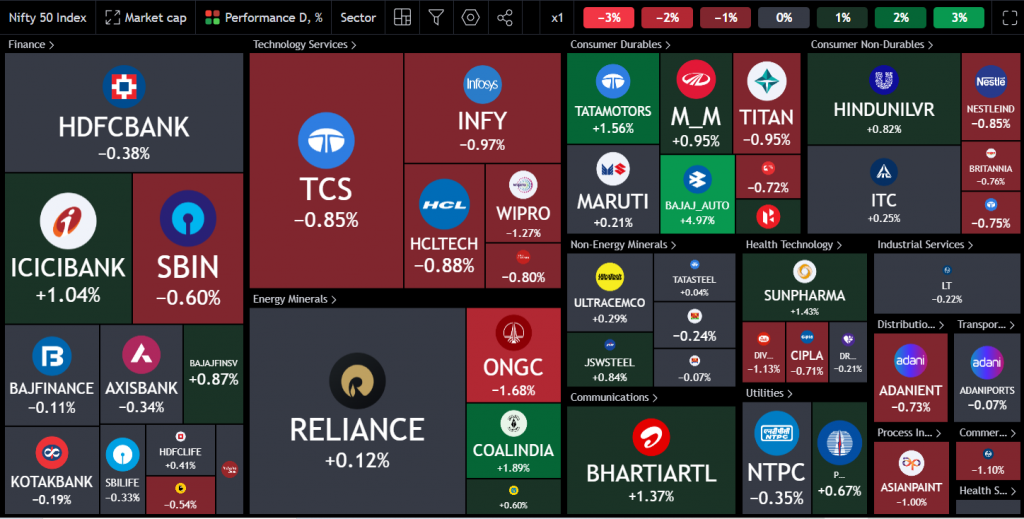
In the Nifty Next 50 heat map, more stocks were in the red than in the green. Dmart was notably down by 3%, with Zydus Life and Berger Paints also facing declines of 2.59% and 2.8%, respectively. Other significant decliners included Pidilite, Trent, DLF, and LIC. On the flip side, IndiGo had a stellar session, rising by 5%, with Zomato continuing its positive trend, gaining 1.82%. TVS Motors, in tandem with Bajaj Auto, rose by 2.24%, and Motherson Sumi gained 1.98%, signaling a recovery in the auto space.
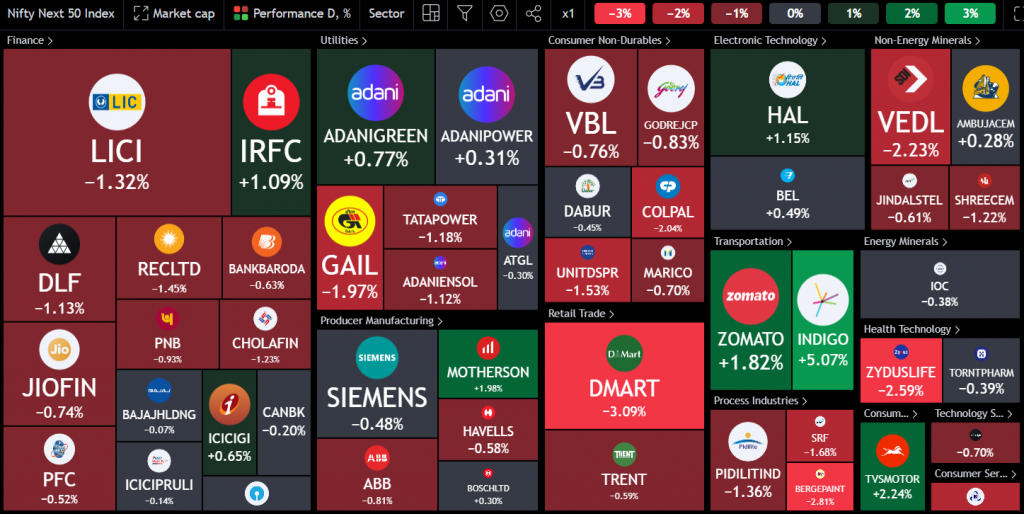
Sectoral Overview
In terms of sectoral trends, real estate stocks were pushed down, with the real estate index declining by 2.4%. This could indicate that the real estate rally is maturing, and some consolidation may be on the horizon. Anecdotal evidence from the physical real estate market suggests a slowdown, with some prices coming off their highs. On the other hand, the auto sector was up by 1.1%, though no other sector showed significant gains. Metals lost 0.4%, IT stocks declined by 1%, and the real estate sector was the biggest loser, down 2.4%.
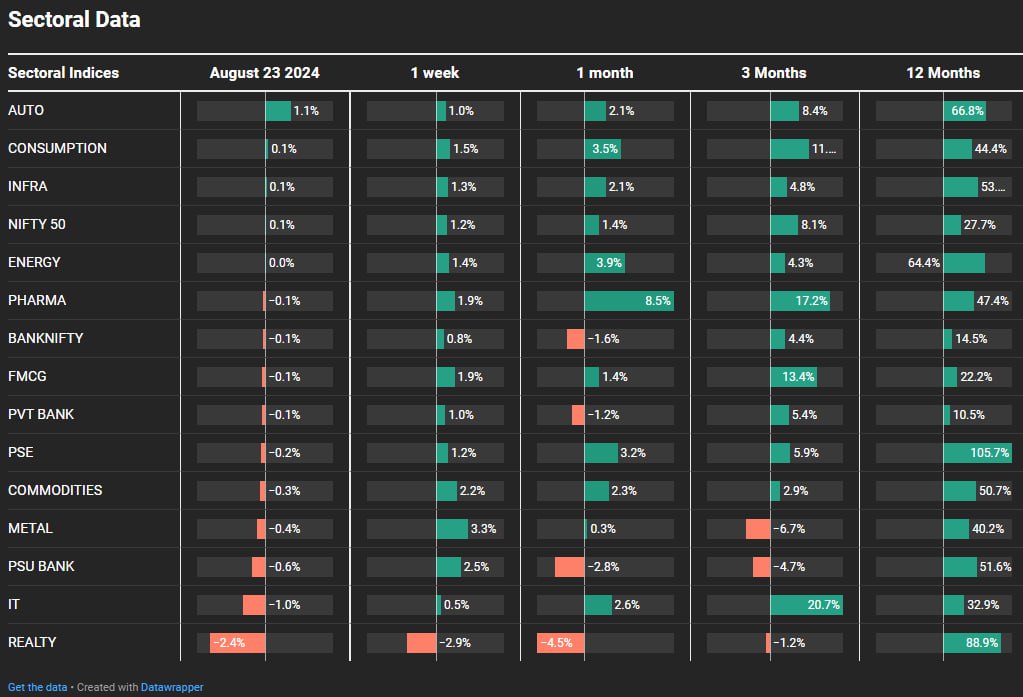
Sectors of the Day
Nifty Auto Index
Bajaj Auto’s 4.9% gain contributed to the CNX Auto index’s rise, bringing it back to its previous resistance level with a 1.12% increase today. The auto sector saw positive performances from Bajaj, TVS, Motherson, Tata, and Hero. This marks the second attempt to break out after the first attempt failed in July.
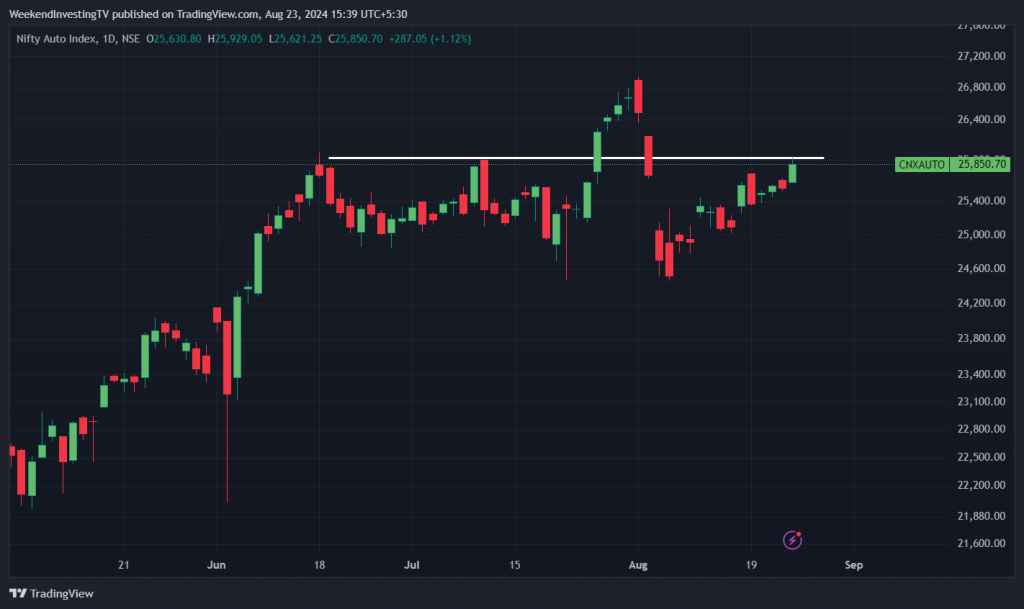
Stocks of the Day
Minda Corporation Ltd
Minda Corporation was the stock in the spotlight today, with a remarkable 17.3% increase. The stock, which was trading at Rs 360 as recently as March-April this year, has now surged to Rs 630, marking an incredible run. Looking at the bigger picture, Minda Corp had a lull from 2018 to 2023, following a massive rally before that. Since then, the stock has been unstoppable, rising from Rs 200 in 2023 to nearly Rs 631 today.
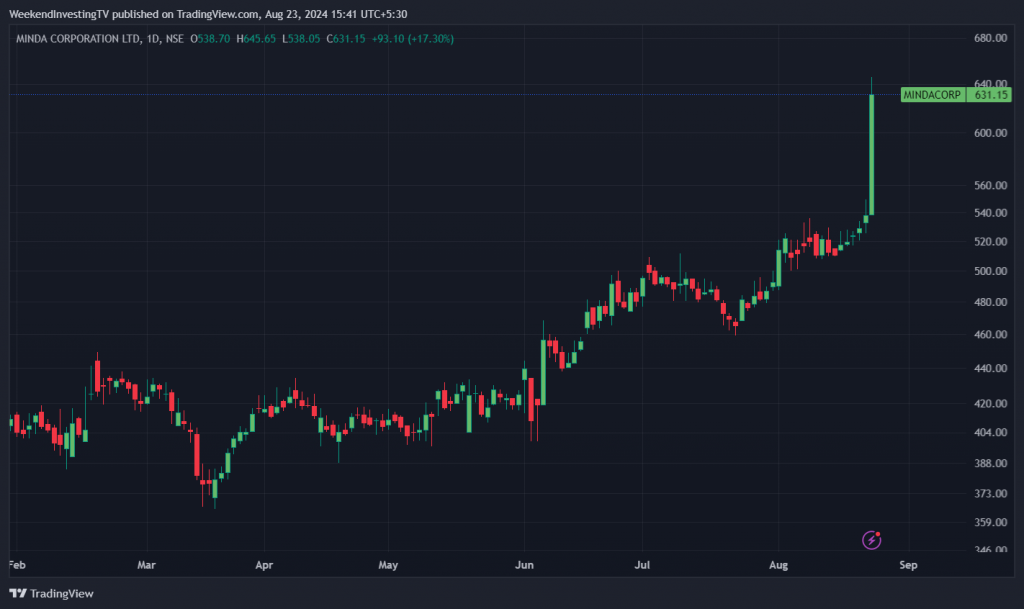
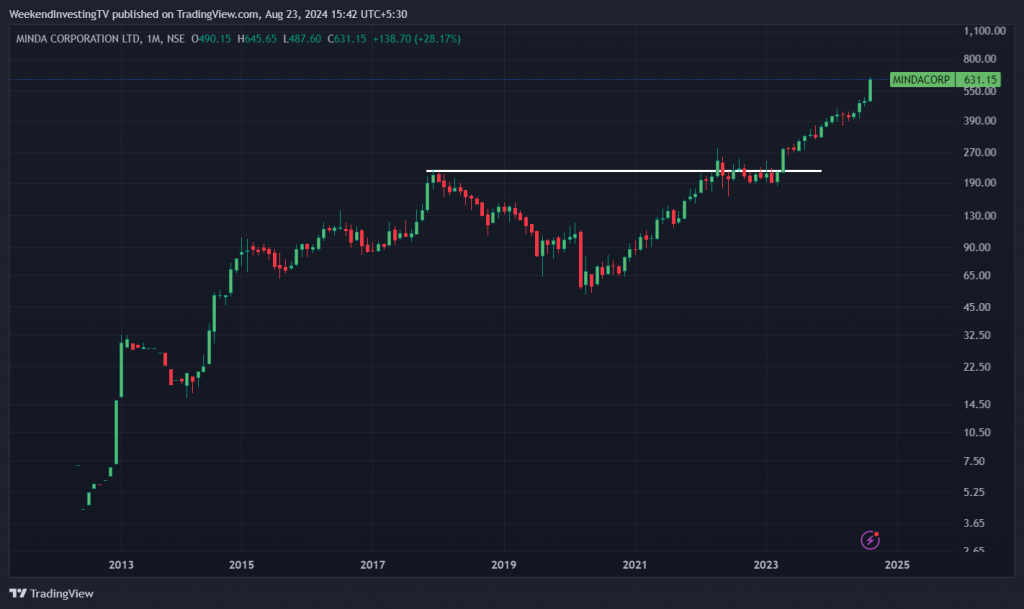
Story of the Day
Moving on to the discussion of gold, the question arises: is it the right time to buy gold? The speaker emphasizes that while they have spoken extensively about gold in the past, it’s a topic that continues to be relevant. Despite some financial market commentators downplaying the value of gold, possibly to promote their own products, it’s important to present a balanced view. Gold has consistently provided fantastic returns in INR terms, with sovereign gold bonds delivering 13% post-tax returns in India over the last eight years. However, many investors have not allocated a significant portion of their portfolios to this asset class, often holding just 1%, 2%, or even 10%. While it’s good that they’ve started investing in gold, it’s not enough.
Gold should not be seen as competing with equities for returns. Instead, it should be viewed as a hedge against equity assets and INR-denominated assets. The purpose of gold is not to outpace equities in returns but to provide protection during periods when equity markets are underperforming. Over the last ten months, for example, Indian gold has appreciated by 38%, while the Nifty has risen by 27%. But gold’s role is not to compete with Nifty for capital; it’s to offer a safety net for your equity investments. This is evident in historical data, where gold performs well during market downturns, serving as a complementary asset to equities and providing stability to a portfolio.
Over the last 30 years, data shows that whenever Nifty underperforms, gold tends to perform well, and this pattern holds over long periods. Gold is crucial for long-term portfolios, especially during times of crisis and market uncertainty, which is the environment we’re currently in. Geopolitical instability, potential policy changes, and global tensions like those between Israel and Palestine or Taiwan and China could all influence markets. A well-allocated portfolio with a portion in gold can help mitigate volatility, preserving wealth and ensuring peace of mind.
Gold is priced in US dollars, and a weakening dollar drives gold prices up. Despite rising interest rates and a stronger dollar in the past, gold has continued to appreciate. Central banks are now buying up to 1,000 tons of gold per year, which is a significant portion of the 3,000 tons produced annually. This increased demand has kept prices rising.
Looking at a longer perspective, over the last ten years, returns from gold and the Nifty have been similar. Importantly, during periods of significant market downturns, like the COVID crash or demonetization, gold provided a cushion for investors. This makes gold an essential part of a diversified portfolio, offering insurance against equity volatility.
When considering gold allocation, the speaker suggests a simple rule: divide your age by two, and that number is your percentage allocation to gold. For example, if you’re 40 years old, 20% of your portfolio should be in gold. This isn’t a hard rule, but a guideline to ensure sufficient exposure. The key is to gradually build up your allocation over time, regardless of whether gold is at an all-time high or not. The idea is not to time the market but to ensure that your portfolio is balanced.
